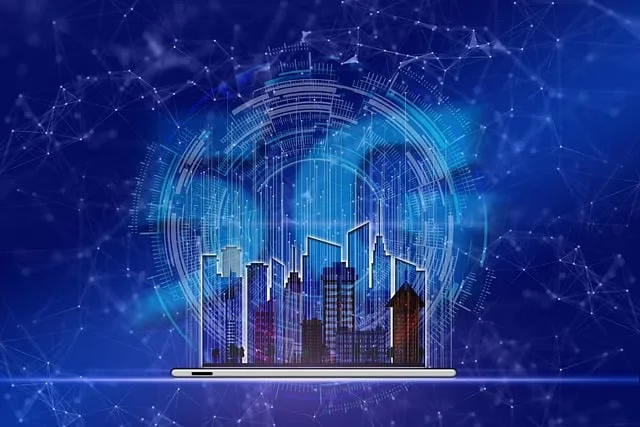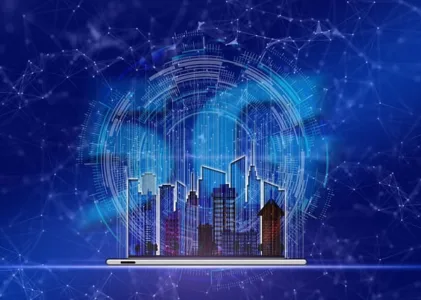What is the meaning of 5G?
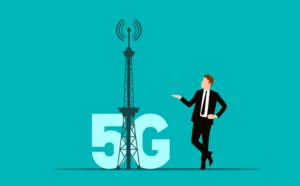
Imagine a world where your autonomous car communicates with traffic lights, other vehicles, and even pedestrians in real time to ensure safe navigation. Picture remote surgeries where doctors can operate on patients thousands of miles away using robotic arms, with no lag or delay. Envision smart cities where everything from streetlights to waste management is optimized through interconnected sensors. These aren’t just scenes from a sci-fi movie; they’re real possibilities with 5G and future wireless technologies.
Understanding 5G: More Than Just Faster Downloads
What exactly does 5G do?
1G (1980s): Analog voice calls
2G (1990s): Digital voice calls and text messages
3G (2000s): Mobile internet and data
4G (2010s): High-speed mobile broadband
Now, 5G is set to redefine what’s possible in wireless communication. Yes, it offers blazing-fast speeds—up to 20 Gbps in ideal conditions, compared to 4G’s peak of 1 Gbps. To put that in perspective, you could download a full-length HD movie in seconds rather than minutes. But speed is just one piece of the puzzle.
Another critical feature of 5G is its low latency. Latency is the delay between sending a command and the network responding—like the lag you might experience in an online game. 4G networks have a latency of around 20-30 milliseconds, which is pretty good for most applications. But 5G takes this down to an astonishing 1 millisecond. This near-instantaneous response is what will enable real-time applications like remote surgeries or autonomous vehicles, where even a split-second delay could be catastrophic.
5G also excels at connecting many devices simultaneously. In busy urban areas or at large events, current networks can get congested as thousands of people try to use their phones at once. 5G is designed to handle up to a million devices per square kilometre, ensuring everyone stays connected even in the most crowded situations.
The Human Impact: How 5G Will Change Our Daily Lives
Let’s move beyond technical specs and talk about how 5G will tangibly improve our lives. Sarah Thompson, a working mother in Seattle, gives us a glimpse into her 5G-enhanced daily routine:
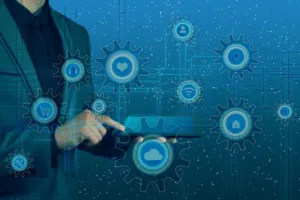
“My morning starts with my smart home assistant, powered by 5G, giving me a rundown of my day—weather, traffic, and even my kids’ school schedules. As I drive to work, my car’s 5G connection helps me navigate through real-time traffic updates, even warning me about a cyclist around the corner that my eyes haven’t spotted yet.
“At the office, I have a video call with colleagues in Tokyo. Thanks to 5G’s low latency, it feels like we’re in the same room—no awkward pauses or talking over each other. Later, I have a doctor’s appointment, but I don’t need to leave work. Through a 5G-enabled telehealth service, I consult with my physician via high-definition video, and she even monitors my vitals in real time through my smartwatch.
“In the evening, I unwind by playing a cloud-based game on my phone. With 5G, there’s no need for a powerful gaming console; all the processing happens in the cloud, streamed to my device without any lag. Before bed, I use a 5G-connected VR headset for a quick meditation session, feeling like I’m really in a peaceful Zen garden.”
Sarah’s Day showcases how 5G will seamlessly integrate into various aspects of our lives, making them more convenient, safe, and enjoyable.
Healthcare Revolution: Saving Lives with 5G
One of the most impactful areas for 5G technology is healthcare. Dr. Elena Rodriguez, a pioneer in telemedicine at Johns Hopkins Hospital, explains: “5G isn’t just an upgrade; it’s a game-changer for medical care. Take remote surgeries, for example. We’ve had robotic surgical systems for years, but their use across distances has been limited by network latency. A half-second delay might not matter when streaming a movie, but in surgery, it could mean the difference between a successful operation and a fatal mistake.”

Dr. Rodriguez continues, “With 5G’s near-zero latency, we can perform intricate procedures from thousands of miles away. This means a world-renowned surgeon in New York could operate on a patient in a rural African village. It democratizes access to top-tier medical expertise.”
Beyond surgery, 5G enables continuous, real-time health monitoring. Patients with chronic conditions like diabetes or heart disease can wear 5G-connected devices that constantly track their vital signs. Any concerning changes trigger immediate alerts to both the patient and their healthcare provider, allowing for proactive intervention before a crisis occurs.
In emergency situations, 5G can also transmit high-resolution medical imagery—like CT scans or MRIs—from an ambulance to the hospital while the patient is en route. This gives the emergency room team a head start in diagnosis and treatment planning, potentially saving critical minutes in life-or-death scenarios.
Smart Cities: Urban Living Enhanced
How will g5 affect smart cities and the people living in them?
As more people move to cities—68% of the world’s population is expected to be urban by 2050—the strain on infrastructure grows. 5G is key to creating “smart cities” that can handle this growth efficiently and sustainably.
Marcus Lee, an urban planner in Singapore, and a global leader in smart city initiatives, shares his experience: “We’re using 5G to weave a digital nervous system throughout our city. Thousands of sensors monitor everything from air quality to pedestrian flow. This data is continuously analyzed to make real-time adjustments.”
For instance, if sensors detect higher pollution levels in one area, traffic light timings can be adjusted to reduce congestion, or public transport routes can be dynamically changed. During large events, crowd movements are monitored to prevent dangerous bottlenecks, with digital signs guiding people along safer paths.
“We’re also revolutionizing waste management,” Lee adds. “Every trash bin in the city has a 5G-connected sensor that monitors its fill level. Waste collectors are automatically routed to the bins that need emptying, optimizing their routes. It’s cut our waste management costs by 30% and significantly reduced truck emissions.”
Barcelona, another smart city pioneer, uses 5G for intelligent water management. Sensors in the water system detect leaks instantly, and some can even self-repair minor issues. This proactive approach has saved millions of liters of water annually.
What’s Next in Wireless Technology?
While 5G is just beginning its global rollout, researchers are already working on its successor. So, what can we expect from “Beyond 5G” or “6G” networks? Professor Lila Patel from MIT’s Wireless Communications Lab offers some exciting insights:
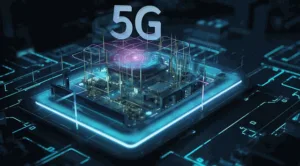
“6G is still in the conceptual stages, but our goal is to make the digital and physical worlds indistinguishable. Imagine a ‘tactile internet’ where you can feel textures, temperatures, and even physical impacts through your device. An architect could manipulate a 3D model as if it were clay. A student could perform a virtual chemistry experiment, feeling the resistance as they mix solutions.”
Another focus is terahertz waves. While 5G uses millimetre waves, 6G aims to harness frequencies in the terahertz range. “These waves offer almost unimaginable bandwidth,” says Prof. Patel. “We’re talking about terabits per second—that’s a thousand times faster than 5G’s peak rates. You could download every movie Netflix has in a minute.”
6G also aims to use ambient energy harvesting to power devices. Your phone might draw energy from surrounding radio waves, light, or even your body heat, eliminating the need for charging. With the integration of AI, networks will become self-aware, optimizing themselves in real-time based on usage patterns.
Space-based networks are another frontier. “We’re looking at a constellation of thousands of low-orbit satellites providing global 6G coverage,” Prof. Patel explains. “This would bring high-speed internet to every corner of the globe, from the Sahara to the middle of the Pacific. It’s about ensuring digital equality, making sure no one is left behind in our increasingly connected world.”
READ ALSO
Biotechnology – Harnessing Nature’s Toolbox
Space Exploration – Unravelling secrets of the Cosmos
Nanotechnology – Engineering at the Atomic Scale
Brainbridge – Head Transplants and Future of BioEngineering
Virtual Reality – Transcending Boundaries of Reality
Challenges and Concerns: Navigating Beyond Landscape
What are the disadvantages of 5G?
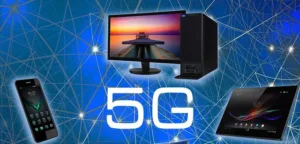
Security is another critical concern. With billions more devices connected, each is a potential entry point for cyberattacks. As everything from pacemakers to power grids gets connected, the stakes of a security breach skyrocket. Cybersecurity expert Aisha Khan warns, “5G’s greater bandwidth means hackers have more avenues to exploit. We’re working round the clock to encrypt data, secure devices, and monitor networks, but it’s an arms race.”
There are also health concerns. Some groups worry that prolonged exposure to 5G’s higher-frequency waves might have adverse health effects. However, Dr. Rachel Green from the World Health Organization clarifies: “Current evidence doesn’t indicate any health risks from 5G exposure. The frequencies used, while higher than 4G, are still far below ionizing radiation like X-rays. We continuously review new studies to ensure safety standards are up to date.”
Privacy is another hot-button issue. The rich data collected by 5G networks can enhance services but also enables unprecedented tracking and profiling. “It’s a double-edged sword,” says Emma Chen, a digital rights activist. “Your smart city knows your every move, your autonomous car knows your daily routine, and your health wearables know your physical state. This data can be used to improve your life, but it could also be misused for surveillance or manipulation. We need robust privacy laws and user control.”
Looking Ahead: A Connected Future
Is 5G the future?

Yet, as with any transformative technology, there are challenges to navigate. We must build out infrastructure thoughtfully, prioritize security and privacy, and ensure that the benefits are distributed equitably. The goal isn’t just faster downloads or cooler gadgets; it’s about using these powerful tools to solve pressing global issues—from healthcare access to urban sustainability.
Professor Patel sums it up beautifully: “When I was a girl in rural India, my village had one landline phone shared by a hundred families. Now, I’m working on technology that will beam high-speed internet to every village like mine from satellites in space. That’s the power of human ingenuity. With 5G and beyond, we’re not just connecting devices; we’re connecting humanity. And in that interconnectedness lies our best hope for tackling the grand challenges of our time.”
As these networks weave an ever-tighter web of connectivity around our globe, they remind us that despite our differences, we are all part of one human family. In a world that can sometimes feel divided, perhaps the most revolutionary aspect of this technology is its potential to bring us closer together, fostering understanding, collaboration, and shared progress. The future of wireless communication isn’t just about faster data; it’s about a faster march toward a better, more unified world.
References:
1. Ericsson. (2023). “5G Basics.” Retrieved from https://www.ericsson.com/en/5g
2. IEEE Spectrum. (2023). “What Is 6G, and When Will It Arrive?” Retrieved from https://spectrum.ieee.org/what-is-6g
3. World Health Organization. (2023). “5G Mobile Networks and Health.” Retrieved from https://www.who.int/news-room/q-a-detail/5g-mobile-networks-and-health
4. McKinsey & Company. (2022). “Connected World: An Evolution in Connectivity Beyond the 5G Revolution.” Retrieved from https://www.mckinsey.com/industries/technology-media-and-telecommunications/our-insights/connected-world-an-evolution-in-connectivity-beyond-the-5g-revolution
5. Smart Cities World. (2023). “Barcelona’s Smart City Strategy.” Retrieved from https://www.smartcitiesworld.net/news/news/barcelonas-smart-city-strategy-6919
6. Johns Hopkins Medicine. (2023). “The Promise of Telemedicine.” Retrieved from https://www.hopkinsmedicine.org/telemedicine/
7. United Nations. (2018). “68% of the World Population Projected to Live in Urban Areas by 2050.” Retrieved from https://www.un.org/development/desa/en/news/population/2018-revision-of-world-urbanization-prospects.html
8. MIT Technology Review. (2023). “What Is 6G and When Will It Come Out?” Retrieved from https://www.technologyreview.com/2023/03/15/1069522/what-is-6g-and-when-will-it-come-out/
9. Electronic Frontier Foundation. (2023). “Privacy in the Age of 5G.” Retrieved from https://www.eff.org/issues/5g

